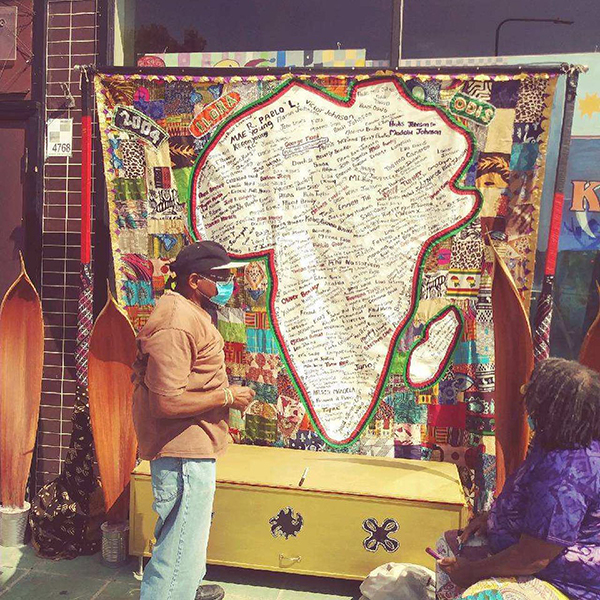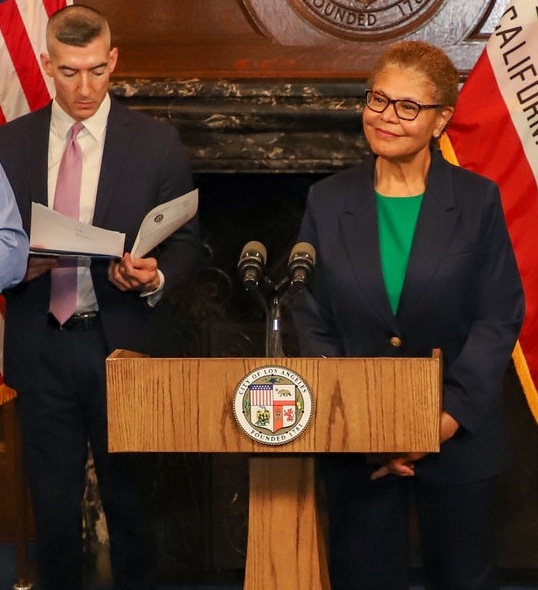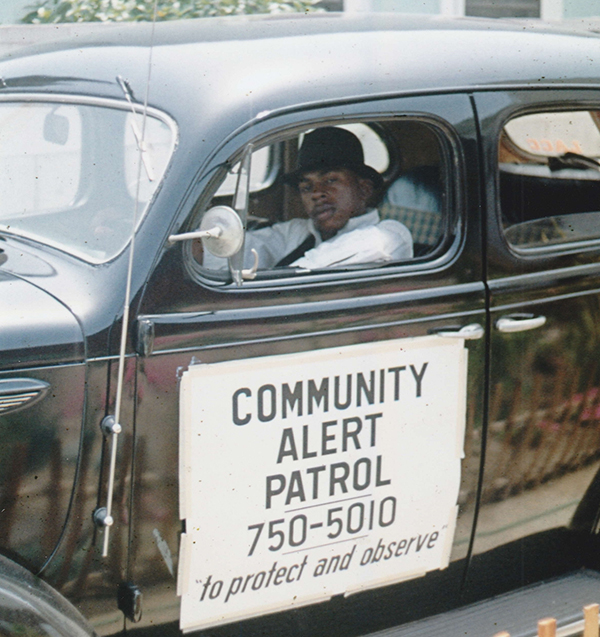Q&A KAREN MACK
By Darlene Donloe
Contributing Writer
LEIMERT PARK — There is nothing ordinary about LA Commons. Far from it.
Founded in 2003, by Karen Mack, LA Commons is a nonprofit known for engaging communities in the creation of public art that tells their unique stories and serves as the basis for dialogue as it gives voice to local narratives and interaction, as well as a better understanding of Los Angeles.
A project of Community Partners, LA Commons has worked in neighborhoods throughout Los Angeles facilitating artistic processes, open to all, that result in highly visible public art projects that tell dynamic neighborhood stories.
Mack, 57, is a married mother of one with an impressive stack of credentials.
Prior to LA Commons, she served as a public service fellow at the John F. Kennedy School of Government at Harvard University where she researched the role of culture in community building. Her appointment at Harvard followed work as the vice president of program development and planning at Community Partners. She attended both Harvard and UCLA. She is a past president of the board of the Los Angeles Neighborhood Initiative and of the city’s Board of Neighborhood Commissioners.
When talking to Mack, it is obvious she is all-in as an unapologetic advocate for the arts, young people, and the Black community.
Contributing writer Darlene Donloe recently caught up with Mack, to talk about LA Commons and what the community can look forward to.
DD: Why did you launch LA Commons?
KM: I got passionate about the arts early. At 17, I got the idea that I wanted to help artists. I don’t know where it came from. An issue I observed was that people in L.A. had a hard time working together. This was in 2000. I kept thinking about how things would be easier if people actually connected with each other. Art is a way to do that.
DD: Why the name LA Commons?
KM: It’s interesting. I went through the whole process. I thought about Zen and the art of making a living. It’s about creating your job around you. There was an exercise for what you wanted to do. I was thinking about connection and communication. A ‘common’ is a traditional space. Plus, we have this in common. A common place physically and spiritually.
DD: What are the criteria for someone to submit their public art projects?
KM: We want to be a resource for the community. The community decides. The Hyde Park mural was a real collaboration with that community. They are dynamic and active. We like to hire local artists so they relate to a community. We are creating pathways for artists.
DD: Where can people see the murals?
KM: There is one on Crenshaw and Slauson. We have a project with the Lucas Museum of Narrative Art on the construction fencing at the Expo Center. There is one on Bill Robinson Drive and a banner project on Expo Center on light poles. There is a mural on the back of Jordan High School. At Fremont High School, they have a health clinic. There are murals and medallions on the fence.
DD: What are you most proud of when it comes to LA Commons?
KM: The contributions we’ve been able to make. The fact that we are charting a course in terms of what art can be in Los Angeles. Now there is a conversation with art and its other intersections. Being on the vanguard and a voice and an intermediary.
We want to be that middle place where people can connect with other people. Being the bridge between the arts and other sectors. I’m proud of the community arts and the arts. I’m grateful to the universe for giving me that gift. I’m grateful to my family, my board members and staff. I’m grateful to be surrounded by support and love.
DD: Talk about the importance of art.
KM: Art is important for a variety of reasons. It’s a reflection of us. It lets us see ourselves. It’s a record so people looking back can say that’s who we were then. It’s a means of expression and allows people to see themselves in this larger society. You feel included or excluded depending on the cultural messages.
Most money in L.A. is not spent in Leimert Park. It gets spent on opera and the philharmonic. Who is that relevant for? I’m not saying it’s not beautiful art. Why aren’t we funded the same way as the art on the hill? People see their worth in the way their art is supported.
DD: The 10th annual Leimert Park Day of the Ancestor Festival of Masks: A Celebration of Black Joy took place recently. For people who are unfamiliar with the celebration, describe that day and why the festival is held.
KM: The point of the festival is that it’s aligned with where we are now. It was started by a Nigerian. He saw a need for the festival and rituals called IGUNGUN, it’s a mass tradition. People put on masks to reflect the community. The community is reflecting on itself.
When you think about it, it’s interesting based on what’s happening now. It’s a wonderful way to celebrate a connection to the African diaspora. Every year we have a different country we focus on. Brazil, South Africa, Nigeria, we are all Black around the world. Let’s connect and celebrate our blackness.
DD: You are constantly creating. What’s currently on your agenda?
KM: I call it, “Creating Our Next L.A.,” a new project that guides a conversation about what we want to see in L.A. in its next iteration. We have to have creative people move us out of this and then create art together that represents what we want to see so we have the vision in front of us. It should jump off in the next month. Over the years, I have found that you don’t move forward if you’re in equilibrium. You have to be off balance.
DD: You are located in the heart of Leimert Park.
KM: That was deliberate. It’s such a special place. Our office is in KAOS Network. It was just like Ben (Caldwell) opened his doors to us. He’s been such a supporter from the beginning. It’s a cool place to be. I don’t know another neighborhood aligned with our vision. People are finally paying attention to the disparity in South LA. There is no better way to activate young people than with the arts. We have to be a resource in the community.
DD: Talk about celebrating Black joy.
KM: We as Black people, for the whole 400 years we’ve been here, have been about trauma. Now, here we are. Some of the people here are the most resilient in the universe. We have lived through horror, such horror. We have used joy to survive. It’s a survival mechanism for us.
Freedom of our expression has allowed us to survive. That is the art of survival. Find that place and move forward. If we thought too hard about it, we’d be dead. We’re the soul of the country on every level.
Darlene Donloe is a freelance reporter for Wave Newspapers who covers South Los Angeles. She can be reached at ddonloe@gmail.com.











